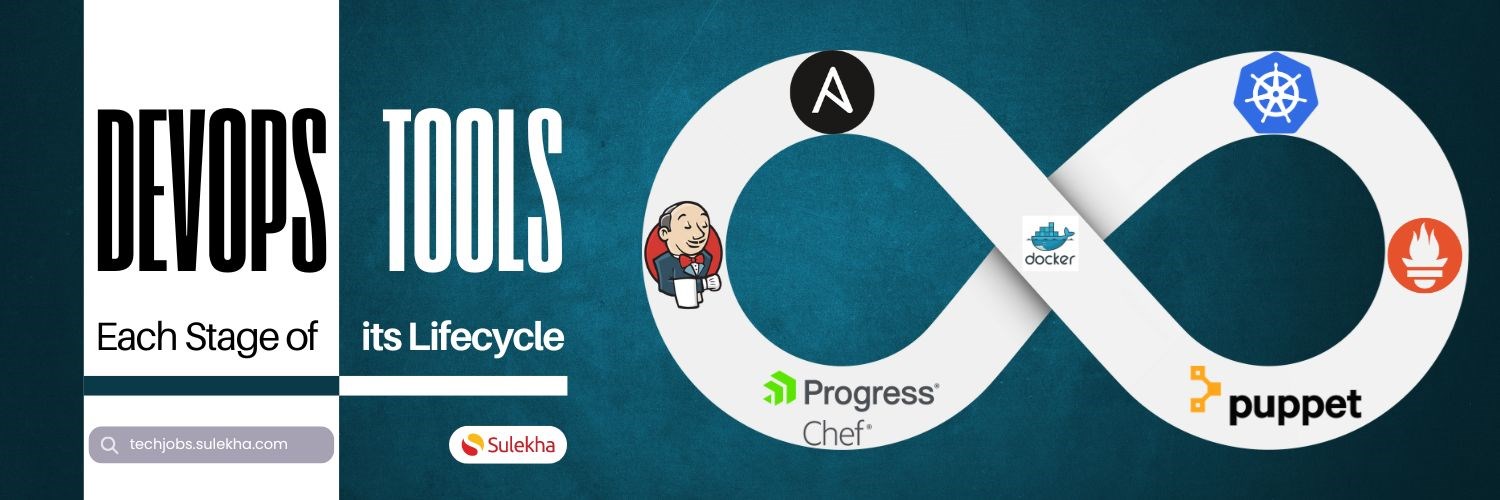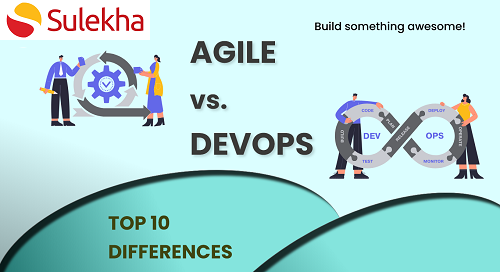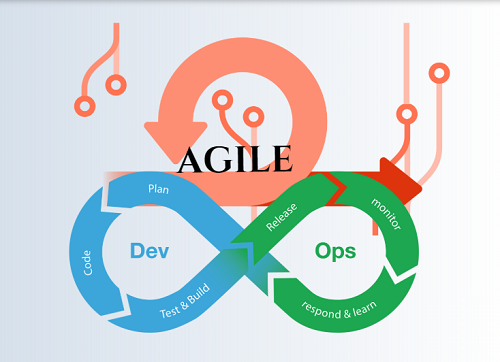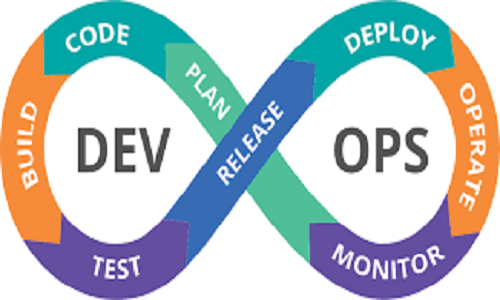What is the Real Flavor of DevOps?
DevOps have certain compelling advantages when it comes to agility. However, the key to any successful deployment generally depends on the approach you choose for DevOps.
Traditional businesses and industries are tempted to take up DevOps. But one must understand that it is very important to opt for DevOps training so that the method can be deployed for improved agility. Nonetheless, just like public vs. private cloud debate, DevOps methodology isn’t only about the technical aspect and capability. To have a successful DevOps is definitely a challenge for any organization.
DevOps can be broken into three different categories:
i) Developer driven
ii) Operations driven
iii) Platform 2.5 type environment
Developer-driven DevOps Features
Developer-driven DevOps has been a popular feature. Some people also called it infrastructure code due to ease of use. This particular application can control the infrastructure, specifically management plane of applications that dictates infrastructure. Netflix is one of the finest examples of DevOps culture today. High Availability is also a good example.
Applications are usually designed to operate continuously even if its underlying infrastructure is faulty. For instance, if the VM hosting application frontend fails, management plane of that application can spend up other instances.
Infrastructure-based Development
In conventional infrastructures, developers are considered customers of the entire infrastructure team. The team provides highly available infrastructure, which developers use for writing applications. These applications may ignore the underlying infrastructure. Rather than creating a unique infrastructure control plane in the application, developers generally write to individual operating systems. On the other hand, the infrastructure team always ensures that the operating system has a resilient infrastructure. Applications availability depends entirely on redundant infrastructure that is managed by infrastructure group.
The gap in application design is an approach that exposes the challenges of moving to developer-driven DevOps model. Presently, most enterprise applications are created for conventional infrastructures. You can find only a few application needs for the developer-driven DevOps in the traditional enterprise. You can find only a few developers who can really understand the infrastructure well and deploy applications to control Greenfield infrastructure.

Operation-driven DevOps
The operation-driven model is the one in which infrastructure adopts a few development tools for managing the overall infrastructure. Conventional operation teams possess development skills to implement automation as well as configuration management tools like Chef, Ansible and Puppet.
Whereas this is one major area of development over the manually configured infrastructure, it is also a far cry from driven infrastructure which powers the latest Netflix. Operations teams have a developer mindset and better understanding. However, it is very important to eliminate the barriers lying between the idea (concept) and execution. This particular app does not remove barriers between developer and infrastructure.
Platform 2.5 Environment
IT leaders aim to improve agility with the DevOps. Platform 2.5 is one of the finest approaches that have gained momentum. From the technology perspective, it can be used as a data center to segment a portion of infrastructure to allow developer-driven DevOps to work. From a practical viewpoint, it could also be used as a simple tool to give developers infrastructurebased on the Docker containers. Furthermore, developers can use these Docker APIS for developing and managing applications. Additionally, developers can also build a Platform 3.0 application to control a subset of infrastructure. Finally, it is the infrastructure team that controls the basic infrastructure.
There are certain challenges faced by developers with this type of an environment, which includes capacity management of underlying infrastructure, troubleshooting, and performance monitoring. On the brighter side, it is a safer environment for experimenting with an innovative operating model. Organizations, however, are working their way through various challenges of the operating systems and the issues seem to fade. For the ones who desire a developer-oriented as well as driven infrastructure, it could be the way ahead without hindering the existing operations.
Find a course provider to learn DevOps
Java training | J2EE training | J2EE Jboss training | Apache JMeter trainingTake the next step towards your professional goals in DevOps
Don't hesitate to talk with our course advisor right now
Receive a call
Contact NowMake a call
+1-732-338-7323Take our FREE Skill Assessment Test to discover your strengths and earn a certificate upon completion.
Enroll for the next batch
DevOps Hands-on Training with Job Placement
- Sep 1 2025
- Online
DevOps
- Sep 2 2025
- Online
DevOps Hands-on Training with Job Placement
- Sep 3 2025
- Online
DevOps
- Sep 4 2025
- Online
DevOps Hands-on Training with Job Placement
- Sep 5 2025
- Online
Related blogs on DevOps to learn more

DevOps Tools for Each Stage of the DevOps Lifecycle
Discover essential DevOps tools tailored for every phase of the DevOps lifecycle. Streamline development, deployment, and operations with the right tools.

The benefits of uniting product management with DevOps
DevOps is focused on streamlining the software development and deployment processes, enabling faster and more frequent releases. By integrating product management into the DevOps workflow, product managers can have more visibility into the developmen

DevOps Platform Market 2023 to Showing Impressive Growth by 2030
In 2023, the DevOps platform market has faced a rapid increase, with forecasts indicating a massive expansion by 2030. This sector's growth is driven by the increased adoption of DevOps concepts and tools across industries. DevOps, which focuses on c

Scrum with DevOps: Integrating Agile and DevOps Practices
Scrum with DevOps: Integrating Agile and DevOps Practices

Mastering DevOps: A Comprehensive Bootcamp Course
Introduction

Best AWS Devops Engineer Professional Certification Dumps
DevOps Certification Over the past decade, DevOps, many companies used DevOps to lower their deployment time and increase their agility. DevOps helps to automate between 6 Cs. (Continuous business planning, collaborative development, continuous test

DevOps Market Research Report Analysis and Forecast: 2018 to 2023
Forecast report entitled “Global DevOps Tool Market 2018 Research Report Analysis and Forecast: 2018 to 2023”. When you go through the report thoroughly, you will find that the report is a top to bottom analysis of the happenings of DevOps Tool Indus

What are the Top 10 DevOps Barriers?
There are many barriers to implementing DevOps successfully, some of them with proper solutions given in the post.
Latest blogs on technology to explore

Understanding Artificial Intelligence: Hype, Reality, and the Road Ahead
Explore the reality of Artificial Intelligence (AI) — its impact, how it works, and its potential risks. Understand AI's benefits, challenges, and how to navigate its role in shaping industries and everyday life with expert training programs

How Much Do Healthcare Administrators Make?
Discover how much healthcare administrators make, the importance of healthcare, career opportunities, and potential job roles. Learn about salary ranges, career growth, and training programs with Sulekha to kickstart your healthcare administration jo

How to Gain the High-Income Skills Employers Are Looking For?
Discover top high-income skills like software development, data analysis, AI, and project management that employers seek. Learn key skills and growth opportunities to boost your career.

What Companies Expect from Product Managers in 2025: Skills, Tools, and Trends
Explore what companies expect from Product Managers in 2025, including essential skills, tools, certifications, and salary trends. Learn how to stay ahead in a rapidly evolving, tech-driven product management landscape.

Breaking Into AI Engineering: Skills, Salaries, and Demand in the US
Discover how to break into AI engineering with insights on essential skills, salary expectations, and rising demand in the US. Learn about career paths, certifications, and how to succeed in one of tech’s fastest-growing fields.

Cybersecurity Training: Powering Digital Defense
Explore top cybersecurity training programs in the USA to meet rising demand in digital defense. Learn about certifications, salaries, and career opportunities in this high-growth field.

Why Pursue Data Science Training?
Empower your career in a data-driven world. Learn why data science training is crucial for high-demand jobs, informed decisions, and staying ahead with essential skills.

What Does a Cybersecurity Analyst Do? 2025
Discover the vital role of a Cybersecurity Analyst in 2025, protecting organizations from evolving cyber threats through monitoring, threat assessment, and incident response. Learn about career paths, key skills, certifications, and why now is the be

Artificial intelligence in healthcare: Medical and Diagnosis field
Artificial intelligence in healthcare: Medical and Diagnosis field

iOS 18.5 Is Here: 7 Reasons You Should Update Right Now
In this blog, we shall discuss Apple releases iOS 18.5 with new features and bug fixes

